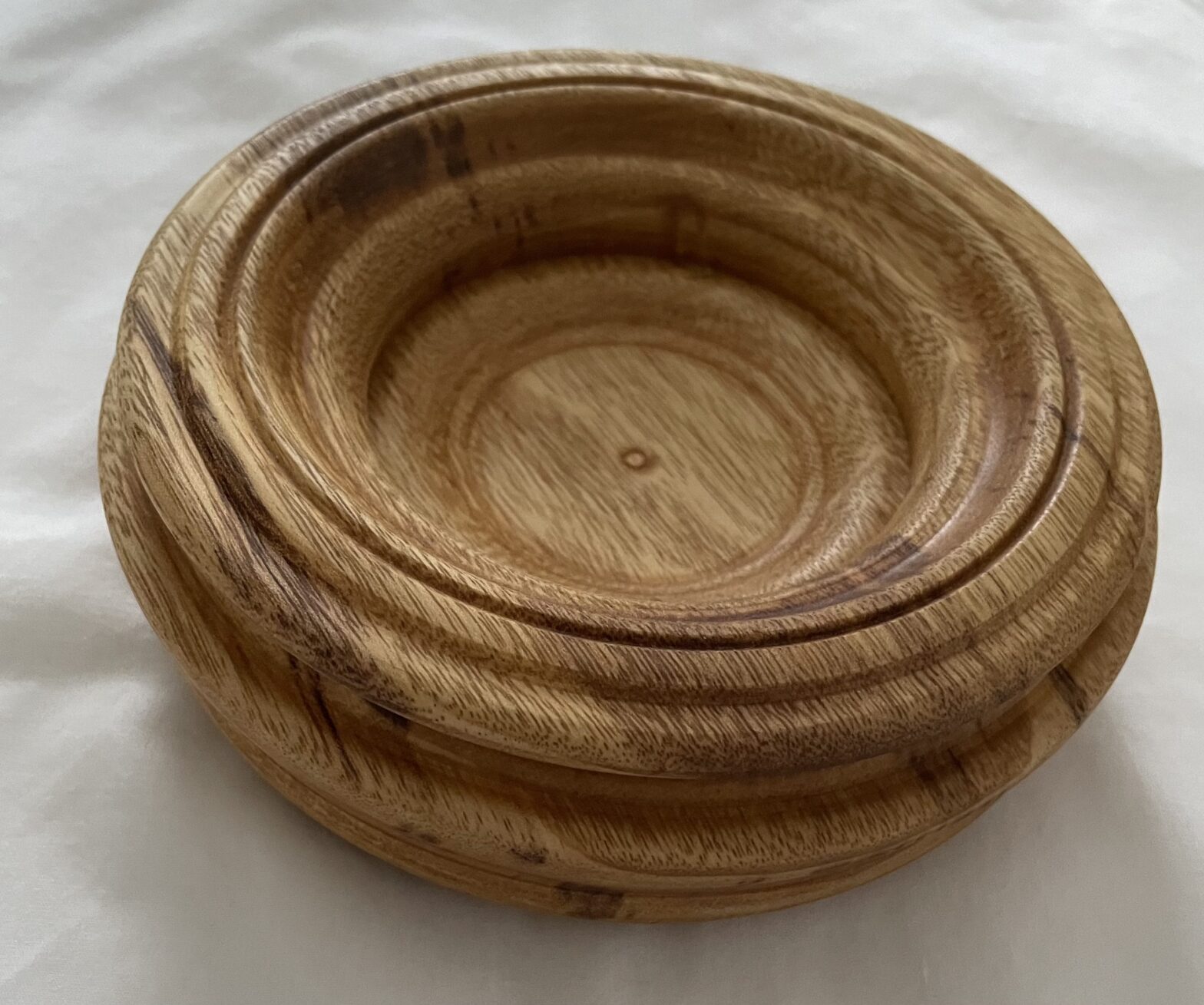Described as “the greenish yellowish wood yielded from the Tulip tree found on the eastern side of North America and also in some parts of China”. (Reference Wikipedia). Tulip is sometimes referenced as Poplar, though the tree is related to the Poplars only by its height which can exceed 33 metres or 100 feet. Tulipwood is soft and light yet very strong and is commonly used for interior joinery and furniture, especially as a more cost-effective substitute for Cherry and Walnut.

Here I used it to produce my first bowl. The circular blank was cut using the band saw from a planed piece approximately 180 mm square and 60 mm thick. The resultant bowl is approximately 165 mm in diameter and 53 mm thick, with a relatively shallow dish decorated with some of my first attempts at beads, coves and some shallow dovetails. I could probably have thinned out the sides, but I got carried away with the decoration and this is purely decorative.

The finish is a danish oil blend with 50% pure Tongue oil. The bowl was sanded to 180-grit and the first three coats were applied by hand. The remaining four coats were applied with the bowl spinning on the lathe, using a soft cloth to buff the finish and produce heat to quickly dry the oil. I applied a wax polish over the top, also using the lathe.

I learned a lot from this project. I prefer to learn through practical experience, even when the project might to some seem overambitious for a beginner. Most of the decoration was produced with a skew chisel which is said to be one of the more difficult tools to master, and I like a challenge. Orienting the chisel to cut the dovetail to take the chuck jaws caused some frustration and took a few attempts, but I got there in the end. This project inspired my face plate centres.


Share Your Thoughts